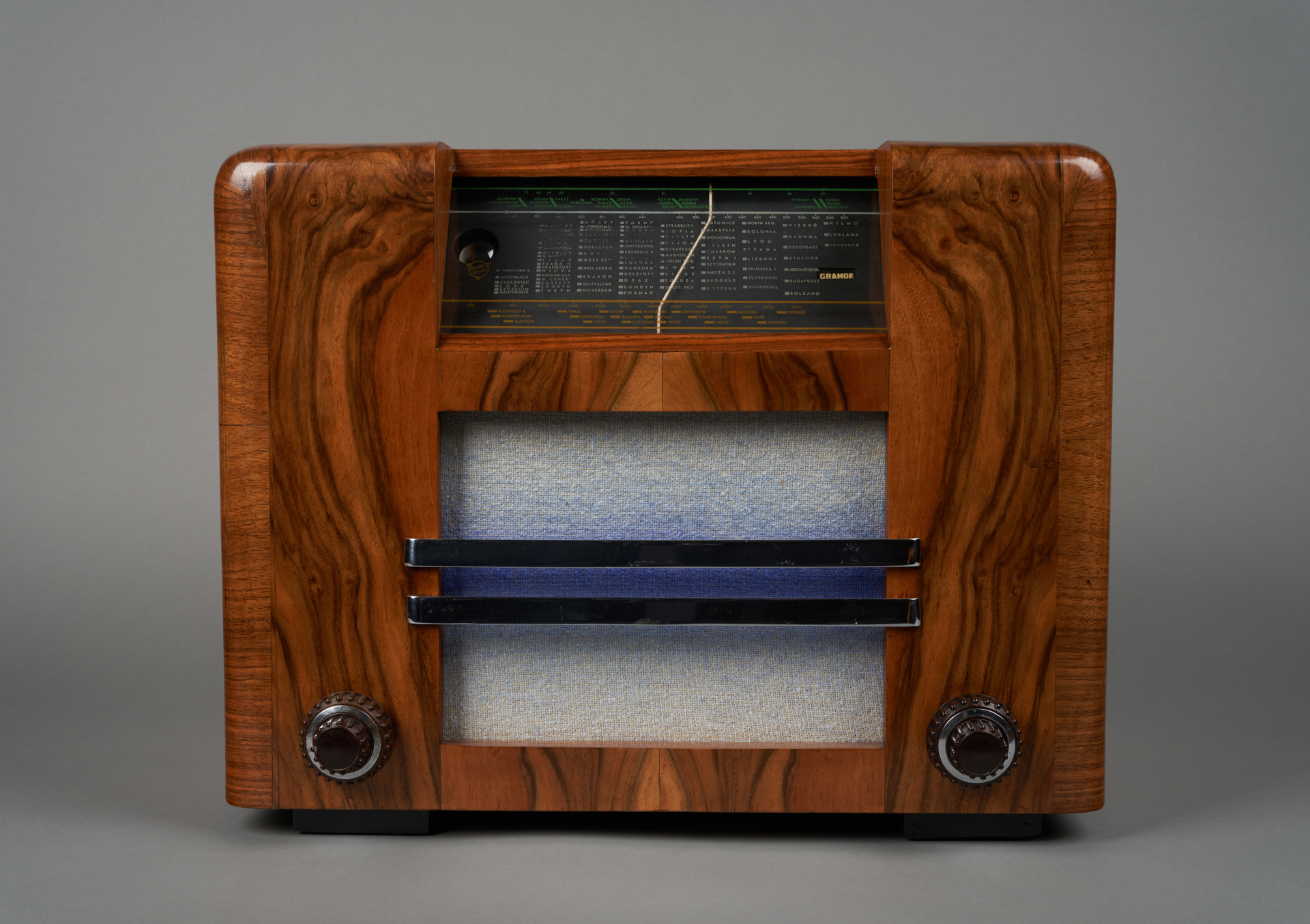
Union 7 radio receiver
Fabryka Odbiorników Radiowych Radio-Union, / 1937 - 1938Creator
Fabryka Odbiorników Radiowych Radio-Union
Time and place of creation
Time:
1937 - 1938
Place:
Poland
The Union 7 radio receiver was manufactured by Fabryka Odbiorników Radiowych Radio-Union, located at 87a Krochmalna street. The enterprise assembled radios under licence from the Hungarian group Tungsram-Orion, headquartered in Budapest. Radio-Union was established in 1935, and its operation was discontinued at the outbreak of World War II in September 1939, when the factory’s buildings were destroyed. The enterprise was established by Benedykt Rawicki and Benedykt Birsztein. During the four years of its operation Radio-Union launched around 15 models of high-class radio receivers. They were appreciated for – as the press of the time reported – “exceptionally reliable fabrication and great technical advantages”.
The Union 7 is a mains-powered, seven-circuit receiver using seven vacuum tubes. It allows reception of three radio wave bands, marked on the scale in different colours: green for short waves (from 19 to 50 m), white for medium waves (in the range between 200 and 600 m), yellow for long waves (between 1 and 2 km). The specific band and radio station could be identified thanks to the unique, zigzagging, “broken” scale needle. The degree of tuning was shown by the electron ray tube tuning indicator, i.e., a “magic eye”, which shone green. The design of the radio used several complimentary technical solutions that improved the quality of radio reception. These include the noiseless switch, which was patented in the United States. Reception quality was also enhanced by the anti-microphonic capacitor that prevented microphoning, i.e., transmission of vacuum tube vibrations to other structural components of the chassis. The vibrations induced voltages in the device under the influence of sound waves during short wave reception. The receiver also had the ability to automatically compensate signal fading.
The designer responsible for the appearance of the Radio Union radios sold in 1937-1938 was Jerzy Karolak. The top achievement in this series is the Union-Lux receiver which has a futuristic design that he designed. Karolak was a member of the “Ład” Polish Artists’ Cooperative established in 1926, the members of which created designs for the purposes of industry. He became famous for preparing the graphics for one of the editions of Marian Falski’s Elementarz (ABC book), and also designed pages of the Polish Folk Garments Atlas.
Author: Filip Wróblewski
Union 7 radio receiver
Fabryka Odbiorników Radiowych Radio-Union, / 1937 - 1938Creator
Fabryka Odbiorników Radiowych Radio-Union
Time and place of creation
Time:
1937 - 1938
Place:
Poland











